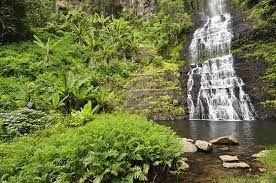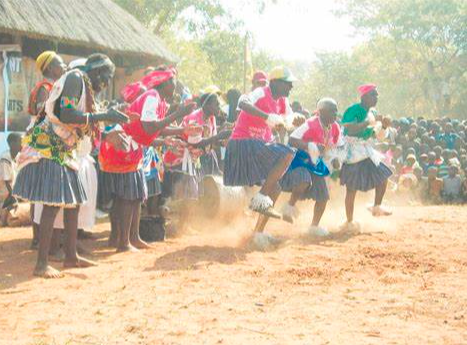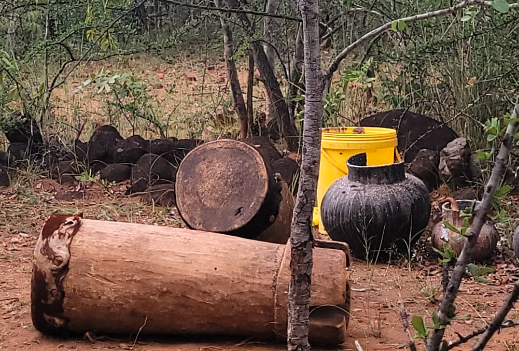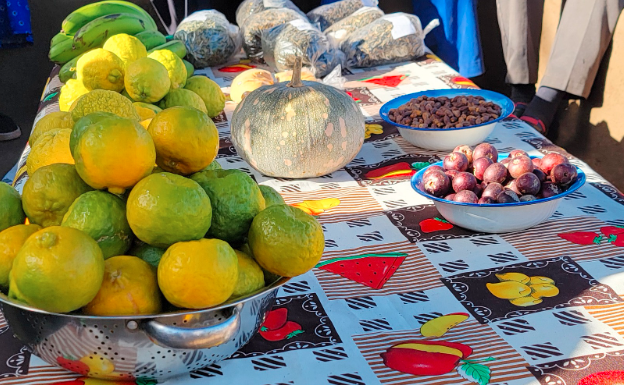
The Chimanimani National Park, a UNESCO World Heritage Site, is a true natural wonder, boasting a diverse array of landscapes that range from towering peaks and lush forests to crystal-clear rivers and cascading waterfalls. This biodiverse hotspot is home to a myriad of rare and endemic plant and animal species, making it a paradise for wildlife enthusiasts and conservation-minded travelers. One of the park’s most iconic features is the Chimanimani Trails, a network of hiking paths that wind through the mountains, offering breathtaking vistas and the opportunity to immerse oneself in the region’s untamed splendor.
From the challenging Ngadzi Trail, which leads hikers to the summit of Mount Binga, to the more leisurely Bridal Veil Falls route, there is something to suit every level of adventurer. Chimanimani is also home to numerous picturesque waterfalls, such as the Bridal Veil Falls, which offer scenic spots for hiking, photography, and enjoying the natural surroundings. Chimanimani is also an excellent destination for wildlife enthusiasts and birdwatchers, who can hope to spot rare and endemic species like the Samango monkey and the Knysna turaco. The Samango monkey is an elusive primate species that is endemic to the Chimanimani Mountains only and cannot be found anyway else in the world. The vibrant Knysna turaco is a striking bird species that can be spotted in the Chimanimani Mountains. The majestic crowned eagle is another bird of prey that inhabits the Chimanimani region. This colorful avian is a delight for birdwatchers visiting the area. Chimanimani has an unique and endangered plant called cycad that is found only in this region of Zimbabwe. These ancient, cone-bearing plants are a draw for botanists and nature lovers. Beyond the park’s natural wonders, the Chimanimani region is also rich in cultural heritage. The local Ndau people have long called these mountains home, and their traditions, music, and crafts offer visitors a glimpse into a vibrant, centuries-old way of life. Exploring the region’s quaint villages and interacting with the welcoming community can be a truly rewarding experience for travelers.
Looking ahead
Despite these abundant assets, Chimanimani has largely remained off the beaten path, overshadowed by Zimbabwe’s more well-known destinations. This is a missed opportunity not only for the local economy, which could benefit immensely from increased tourism, but also for travelers seeking an authentic, unspoiled experience in one of Africa’s most captivating natural environments. By showcasing the Chimanimani Mountains and the surrounding region, Zimbabwe can unlock a new era of sustainable tourism that celebrates the country’s diverse natural and cultural heritage. With the right promotion and investment, this hidden gem could become a must-visit destination for adventurers, nature lovers, and anyone seeking to connect with the raw, untamed beauty of the African continent. The time has come to shine a spotlight on Chimanimani, to share its story with the world, and to invite travelers to discover the wonders that lie within this enchanting corner of Zimbabwe. By doing so, we can not only bolster the local economy but also contribute to the long-term preservation of this precious natural and cultural treasure.
Unlocking Chimanimani’s Untapped Potential: Why This Zimbabwean district Deserves the Spotlight!
Located in the rugged beauty of eastern Zimbabwe, Chimanimani has long captivated the hearts of adventurers and nature enthusiasts. Yet, despite its undeniable allure, this remarkable district has yet to receive the attention it rightfully deserves as a premier tourist destination. The district has shown remarkable resilience to climate shocks and developmental marginalisation.
Chimanimani National Park
The Chimanimani National Park, a UNESCO World Heritage Site, is a true natural wonder, boasting a diverse array of landscapes that range from towering peaks and lush forests to crystal-clear rivers and cascading waterfalls. This biodiverse hotspot is home to a myriad of rare and endemic plant and animal species, making it a paradise for wildlife enthusiasts and conservation-minded travelers.
Chimanimani Trails
One of the park’s most iconic features is the Chimanimani Trails, a network of hiking paths that wind through the mountains, offering breathtaking vistas and the opportunity to immerse oneself in the region’s untamed splendor. From the challenging Ngadzi Trail, which leads hikers to the summit of Mount Binga, to the more leisurely Bridal Veil Falls route, there is something to suit every level of adventurer. Chimanimani is also home to numerous picturesque waterfalls, such as the Bridal Veil Falls, which offer scenic spots for hiking, photography, and enjoying the natural surroundings. Wildlife enthusiasts and birdwatchers can hope to spot rare and endemic species like the Samango monkey and the Knysna turaco, as well as the majestic crowned eagle.
Cultural heritage
Beyond the park’s natural wonders, the Chimanimani region is also rich in cultural heritage. The local Ndau people have long called these mountains home, and their traditions, music, and crafts offer visitors a glimpse into a vibrant, centuries-old way of life. Exploring the region’s quaint villages and interacting with the welcoming community can be a truly rewarding experience for travelers.
Infrastructure and Amenities
To support the growth of tourism in Chimanimani, the region offers a range of accommodations and amenities for visitors. There are several well-appointed hotels and lodges, such as the Chimanimani Hotel and the Chilo Gorge Safari Lodge, which provide comfortable and convenient bases for exploring the area. The road network in Chimanimani, while sometimes challenging due to the rugged terrain, is generally accessible and well-maintained, allowing visitors to navigate the region with ease. Additionally, the local communities offer a variety of dining options, showcasing the rich culinary traditions of the Ndau people. Visitors can savor traditional Zimbabwean dishes, as well as a range of international cuisines, in the region’s restaurants and cafes. The area also boasts a burgeoning local arts and crafts scene, providing travelers with opportunities to purchase unique souvenirs and support the local economy.
Looking Ahead
Despite these abundant assets, Chimanimani has largely remained off the beaten path, overshadowed by Zimbabwe’s more well-known destinations. This is a missed opportunity not only for the local economy, which could benefit immensely from increased tourism, but also for travelers seeking an authentic, unspoiled experience in one of Africa’s most captivating natural environments. By showcasing the Chimanimani Mountains and the surrounding region, Zimbabwe can unlock a new era of sustainable tourism that celebrates the country’s diverse natural and cultural heritage. With the right promotion and investment, this hidden gem could become a must-visit destination for adventurers, nature lovers, and anyone seeking to connect with the raw, untamed beauty of the African continent. The time has come to shine a spotlight on Chimanimani, to share its story with the world, and to invite travelers to discover the wonders that lie within this enchanting corner of Zimbabwe. By doing so, we can not only bolster the local economy but also contribute to the long-term preservation of this precious natural and cultural treasure.













